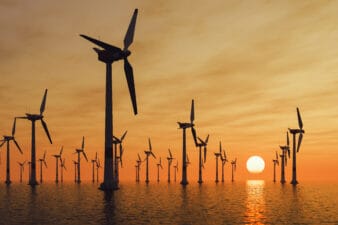With so much negativity surrounding the energy sector in recent times, it might seem contrarian to look at a play in this space. If you find a company with good operating efficiencies, a growing bottom line, and a good order book, it’s hard to ignore it, never mind the space it operates in. If a stock shows promise, you have to take a hard look at it.
Enerflex (TSX:EFX) engineers, designs, manufactures and provides after-market support for equipment, systems and turnkey facilities used to process and move natural gas from the wellhead to the pipeline.
The company operates in Canada, the United States, Argentina, Bolivia, Brazil, Colombia, Mexico, Australia, the United Kingdom, the United Arab Emirates, Oman, Bahrain, Indonesia, Malaysia, and Thailand.
Enerflex delivered strong results in the third quarter of 2019 compared to the prior year based on strong execution of projects included in a record backlog as of December 31, 2018, higher service activity levels, and the continued organic expansion of its contract compression fleet in the USA.
Revenues came in at $544 million (up from $445.8 million in Q3 2018), adjusted EBITDA of $107 million (up from $65 million), and EBIT of $88 million (up from $56 million). Net earnings of $63 million, reflect a 66% increase over the prior-year period ($38 million).
Gross margin percentage for the quarter was 24%, compared to a five-year average of approximately 19% driven by two main factors. Enerflex attributed the gross margin improvement to solid execution of a small number of large, high margin engineered systems projects that were booked during the second half of 2019 and increasing revenue from rentals.
As these large projects are completed in 2020, the company expects that consolidated gross margins will normalize to the 5-year average of approximately 19%.
Enerflex’s contract compression fleet in the U.S. has grown to 280,000 horsepower, bringing the total global fleet to over 700,000 horsepower.
Bookings in the quarter continued the trend that emerged during the first half of 2019, bringing the backlog to $701 million. The current backlog is evenly distributed between gas processing and gas compression projects, giving Enerflex revenue visibility to the first half of 2020.
What next for investors?
The company has beaten earnings estimates in three out of its last four quarters. The company has improved its revenues and earnings since it made a loss of $105 million on revenues of $1.13 billion in 2016. In 2018, it recorded $1.7 billion in revenues and $101 million in earnings.
Enerflex’s dividend history is solid. It started paying dividends a decade ago in 2010. Its first annual payment was $0.24 and its last annual payment in 2018 was $0.46. That’s a compounded growth rate of 7.5% per year. Not bad at all.
Enerflex is trading at $11.59 and has lost 34% in the last 12 months which has increased the forward dividend yield to 4%. The company has a debt balance of $466.6 million and can easily repay its principal and interests as its cash balance is $219.5 million while operating cash flow stands at $245 million. With a payout ratio of 24.6%, Enerflex has enough room to increase dividend payments.
Analysts tracking the stock have given it an average price target of $17.6. That’s a potential upside of over 50% in 12 months, making it an attractive bet for contrarian investors.







